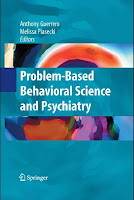The Epidemiology of Diabetes Melitus Ebook PDF

Diabetes mellitus is a disease that was recognized in antiquity. Polyuric states resembling diabetes mellitus were described as early as 1550 BC in the ancient Egyptian papyrus discovered by George Ebers (1). The term ‘diabetes’, which is from the Ionian Greek meaning ‘to pass through‘, was first used by Aretaeus of Cappadocia in the second century AD as a generic description of conditions causing increased urine output (2). The association of polyuria with a sweet-tasting substance in the urine was noted in the fifth to sixth century AD by two Indian physicians, Susruta and Charuka (1,2). The urine of certain polyuric patients was described as tasting like honey, sticky to the touch and attracting ants. Two forms of diabetes could be distinguished in the Indians’ descriptions: one affected older, fatter people and the other thin people who did not survive long; this strongly reminds us the present clinical description of Type 2 and Type 1 diabetes. The term diabetes mellitus, an all

